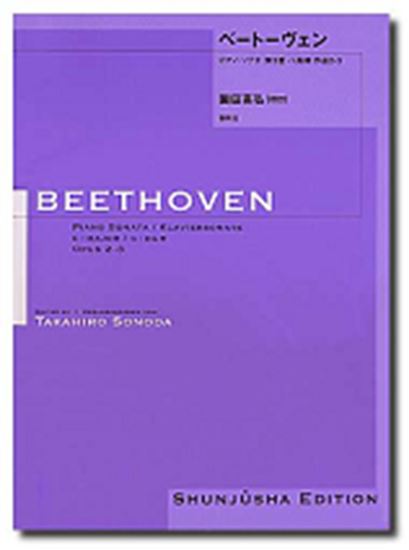Beethoven, Ludwig van : Sonate für Klavier Nr.3 1.Satz Allegro con brio
Work Overview
Genre:sonata
Total Playing Time:10 min 00 sec
Copyright:Public Domain
Commentary (2)
Author : Okada, Akihiro
Last Updated: January 20, 2019
[Open]
Author : Okada, Akihiro
(First Movement) C major, 4/4 time, Sonata form
Exposition
It begins with the main theme, characterized by a trill-like figuration in parallel thirds. In the latter half of the theme, the accent shifts to the second beat, indicated by sforzando (sf) markings. Following the statement of the theme in the bass voice and a transition featuring arpeggiated figures, the subordinate theme first appears in G minor. Subsequently, another subordinate theme is presented in G major (note). These two subordinate themes are derived from the Piano Trio, WoO. 36-3, composed during Beethoven's Bonn period. The codetta concludes in the dominant key, following the development of the transitional material, the trill-like motive of the main theme, and a syncopated motive played in octaves.
Development + Recapitulation
First, the trill-like motive is repeated, followed by the repetition of the arpeggiated figure, leading to a modulation to D major. While this arpeggiated figure likely develops the motive from the transition, the connection is not particularly well-integrated. The development combines the main theme with the syncopated motive marked by sforzandos.
The trill-like motive is repeated over the dominant chord, leading into the recapitulation. The statement section is varied (from m. 147 onwards), and while the syncopated motive in the codetta and the emphasis on syncopation via sforzando markings all derive from material in the exposition, they appear somewhat awkward. Both subordinate themes are recapitulated in C minor/major, but the coda is expanded.
Coda
First, it modulates to A-flat major (the VI degree of the parallel minor) via a deceptive cadence from the dominant chord. Unrelated arpeggiated figures are then repeated, returning to the dominant of C major (the second inversion of the I chord), which is further extended by a cadenza-like passage. The insertion of such a passage over this chord can be interpreted as a written-out cadenza or Eingang, habitually performed just before the recapitulation or immediately preceding the coda.
Considering that Beethoven later wrote out all the cadenzas for his own concertos, it is reasonable to interpret this passage within such a context.
After this cadenza-like passage, the main theme reappears once more, concluding the movement similarly to the codetta of the exposition.
Author : Ooi, Kazurou
Last Updated: December 5, 2019
[Open]
Author : Ooi, Kazurou
Beethoven's three sonatas dedicated to Haydn are Op. 2. His Op. 1, by the way, is a piano trio. The first movements of the first two sonatas feel less dense in terms of notes and texture compared to the first movement of this sonata. The first movement of this sonata clearly has a larger scoring compared to the previous two sonatas. Of course, this sonata has a strong background in string quartet writing, and Beethoven never forgot that. However, a string quartet alone is somewhat insufficient for this sonata.
Incidentally, his first symphony was completed five years after this sonata. Considering these facts, I have come to the conclusion that when he was writing this sonata, he had a piano trio, rather than a symphony, in mind. When looking at the score of this sonata, it makes perfect sense to consider it as a string quartet or a piano trio.
For example, the opening 12 measures could be conceived as a string quartet, and measures 13 to 26 as a piano trio, and so on. Passages with relatively larger scoring would be well understood when thought of as a piano trio.
Incidentally, this sonata is very risky in contexts like competitions. The thirds in the first four measures are technically difficult, to the extent that some even play them with the left hand. In measure 3, fingerings 3-2 and 4-1 are considered good, but the author finds 3-1 and 4-2 easier. This is the first difficult passage.
Next, there is the left-hand trill starting from measure 78. Although it's a passage that can be easily disguised because it's played with the right hand, it should be practiced thoroughly.








